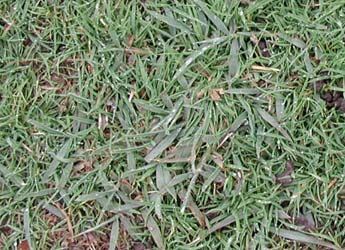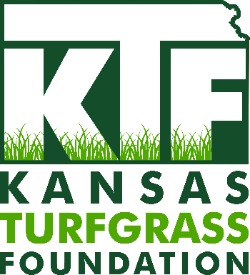Common Bermudagrass (Cynodon dactylon)

Common bermudagrass is a medium-coarse textured, low growing warm-season grass. It is used as a low maintenance turfgrass species throughout much of the Southern states. Bermudagrass will normally only survive winters in the lower ¼ of the North Central Region and is subject to winter-kill most anywhere else without unnatural manipulation of the growing environment. In East Lansing , Michigan it can be observed growing above steam tunnels. This grass spreads aggressively during the summer months via lateral creeping stems either above ground (stolons) and/or below ground (rhizomes). Unmowed bermudagrass will form seedheads which have a characteristic seedhead with 3-7 and is sometimes confused with crabgrass. It is objectionable because it turns an unattractive straw brown color with the first killing frost and remains that way for five months or more. When grown in a mixture with cool-season species it disrupts the uniform green turf canopy. It also invades flower beds, and increases the need for edging along harscape like sidewalks, etc.
Occurrence
Bermudagrass is one of the grasses of choice for some lawns in the South but typically the bermudagrass grown in these lawns is a hybrid bermudagrass with a much finer leaf texture and upright growth habit. In the North Central Region, coarse textured common bermudagrass is what is normally found. This grass commonly invades cool-season lawns like Kentucky bluegrass, perennial ryegrass or turf-type tall fescue during the summer months when these grasses are under heat and drought stress and less competitive. It is only a problem in full sun locations and does not tolerate even moderate shade. It aggressively invades lawns from adjacent property and to a lesser extent seed movement. In new landscapes, contaminated soil is the primary method for introduction. Although it normally forms localized patches in desirable lawn grasses it is a very tenacious weed and extremely difficult to control once established.
Non-Chemical Control
As always proper cultural practices to maintain the health of the desired turfgrass species is the foundation for reducing infestations. The following practices will slow down its spread but will not eradicate this weed. For cool-season grasses this includes mowing as high as tolerable. Avoid summer nitrogen applications as this will encourage bermudagrass growth. Fertilize the cool-season lawn two or three times during the autumn months to increase density of the desirable species. Overseeding the bermudagrass areas with turf-type tall fescue or perennial ryegrass will help to mask the brown color and may slow bermudagrass green-up. Perennial ryegrass blends better with Kentucky bluegrass lawns. Remove bermudagrass with a sod cutter, cutting as deeply as possible, 1 inch or more, to try and remove as many rhizomes as possible. Re-sod with thick cut turf-type tall fescue or bluegrass. This practice should be done in spring or fall when cool-season grasses establish easily. Realize that in all of these situations bermudagrass will merely be slowed and not ever completely eradicated.
Chemical Control
This is an extremely difficult weed to control and multiple applications of herbicides or even soil fumigants rarely provide 100 % control. The best programs combine herbicides and the aforementioned cultural controls. Non-selective systemic herbicides like glyphosate which control most weeds very well with a single application are only moderately effective. A single application will eradicate approximately 75%, a second application 3-4 weeks after the first will provide about 90% and three applications will provide 98%. Repeat applications will be ineffective unless surviving bermudagrass rhizomes have had sufficient time to produce new growth. Treat only actively growing (June – Sept.) turf, dormant applications are ineffective. In tall fescue turf the selective herbicide fluazifop can be used during late-spring as bermudagrass is greening up. A slight discoloration of tall fescue should be expected. This herbicide will kill Kentucky bluegrass and other cool-season turfgrasses. For other cool-season turfgrasses herbicides like fenoxaprop can be applied for suppression during late-spring without damage to desirable cool-season turfgrasses. Regardless, remember these herbicides only suppress bermudagrass growth and do not eradicate the weed.



